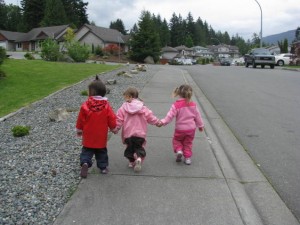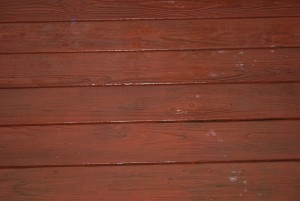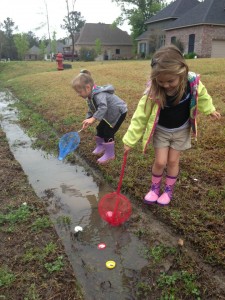Good thing kids are wash, towel dry. Child’s play in puddles sometimes needs a follow-up bath but it’s certainly fun. The learning can be splashy. Puddles are a sort of magnet for kids. They call out to them in a voice adults can’t hear, begging kids to come and play. Resistance is futile. The only influence adults have is occasionally getting boots on feet before kids answer the call.
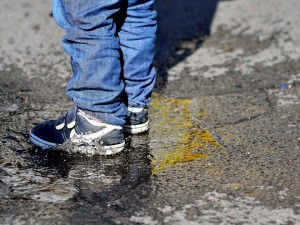 Puddles are made for splashing. Adventurous kids like to stamp forcefully in puddles while more timid ones will slowly work their way in. Deep or shallow, there is an element of mystery. What lurks at the bottom of the puddle? Is it deep enough to go over the top of boots or shoes or not?
Puddles are made for splashing. Adventurous kids like to stamp forcefully in puddles while more timid ones will slowly work their way in. Deep or shallow, there is an element of mystery. What lurks at the bottom of the puddle? Is it deep enough to go over the top of boots or shoes or not?
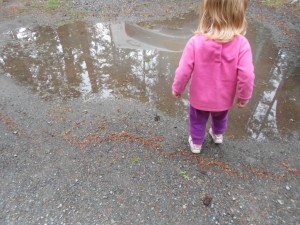 While feet respond to puddles first, hands also like to explore and splash. Sticks and leaves can be added to puddles to see if they will float. If the puddle is fairly deep, kids may like to throw in rocks to see and hear the splash.
While feet respond to puddles first, hands also like to explore and splash. Sticks and leaves can be added to puddles to see if they will float. If the puddle is fairly deep, kids may like to throw in rocks to see and hear the splash.
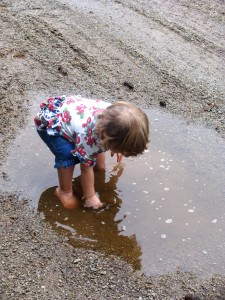 In cold weather, ice sometimes forms on puddles and who can resist the challenge of trying to crack the ice? Kids sure can’t. Oil in a puddle creates a swirling rainbow of color. Puddles also come in a variety of shapes. Although one end might be skinny, it’s more challenging to try and jump over the wide part.
In cold weather, ice sometimes forms on puddles and who can resist the challenge of trying to crack the ice? Kids sure can’t. Oil in a puddle creates a swirling rainbow of color. Puddles also come in a variety of shapes. Although one end might be skinny, it’s more challenging to try and jump over the wide part.
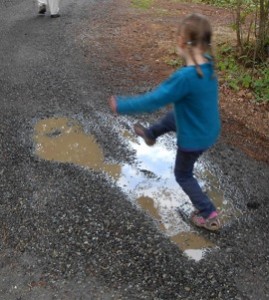 Kids will create different ways to play in puddles and there are different things to learn. Think of the vocabulary of a puddle: deep, shallow, wide, murky, muddy, clear, and more. There’s science too as kids explore float and sink and how they can affect a puddle. Puddles invite questions as well as splashing: Where does a puddle come from? What makes a puddle? Kids learn about themselves in terms of their powers and their limitations. They might be able to affect the size of a puddle by putting their foot across the water creating it, but only for a while. When two or more kids are playing in puddles, they also need to learn some social skills. Splashing others may or may not be okay.
Kids will create different ways to play in puddles and there are different things to learn. Think of the vocabulary of a puddle: deep, shallow, wide, murky, muddy, clear, and more. There’s science too as kids explore float and sink and how they can affect a puddle. Puddles invite questions as well as splashing: Where does a puddle come from? What makes a puddle? Kids learn about themselves in terms of their powers and their limitations. They might be able to affect the size of a puddle by putting their foot across the water creating it, but only for a while. When two or more kids are playing in puddles, they also need to learn some social skills. Splashing others may or may not be okay.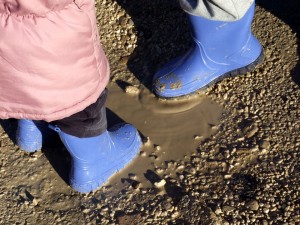 Child’s play in puddles is also a way to connect to nature. For kids, there’s no muddle about puddles. Any puddle play for your child?
Child’s play in puddles is also a way to connect to nature. For kids, there’s no muddle about puddles. Any puddle play for your child?

